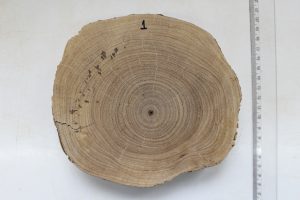Integration of information between the two institutions was supported by ACTO, through the Bioamazon Project.
The xilotheque¹ of the Forest Products Laboratory (LPF) of the Brazilian Forest Service (SFB), has just been integrated to the JABOT system, developed by the Botanical Garden of Rio de Janeiro. The system is a data platform for managing scientific collections and integrates a network of herbaria and other botanical collections throughout Brazil.
Named after Dr. Harry van der Slooten xilotheque in honor of the founder of the Forest Products Laboratory, this official wood collection currently contains more than 5 thousand wood samples from around 3 thousand species of wood trees. The catalog is important reference material for wood identification and for scientific research.
With the integration of information in the JABOT system of the Botanical Garden of Rio de Janeiro, the data from the LPF collection will be available in an online environment for the whole society, contributing to the biodiversity research carried out in the country.
The next step will be to make available photographs of all wood samples, microscope slides, and other types of images produced by the LPF equipment acquired by ACTO through the Bioamazon Project, which totals more than USD 263,000.
The online library will be used both to support research in wood technology and to assist control and enforcement actions by providing an excellent reference base for taxonomic determination of wood samples.
To visit the LPF’s xylotheque at JABOT, visit http://lpf.jbrj.gov.br/ To see the entire platform and scientific collections deposited in herbaria and other institutions, visit http://jabot.jbrj.gov.br/v3/consulta.php#
The ACTO Bioamazon Project, implemented with funding from German cooperation through KfW, collaborated in this action of migrating the Access database to the JABOT system and integration with REFLORA, making the collection available online with an investment of about USD 18,000.
“With the conclusion of this activity, the Project contributed so that at least one institution at a national level has the facilities, equipment, technological tools and training to operate information systems related to biodiversity and CITES. Our goal is to equip other institutions in the other Amazon countries and thus contribute to the integration and sharing of information on Amazon biodiversity,” said Mauro Ruffino, coordinator of the Bioamazon Project.

Handroanthus impetiginosus. Photo: Gustavo Barros Rocha/LPF

Combretum glaucocarpum_Cerrado. Photo: Gustavo Barros Rocha/LPF
Published in the Bioamazon Newsletter, issue n. 10, Jul-Ago 2021.
========================================================================



